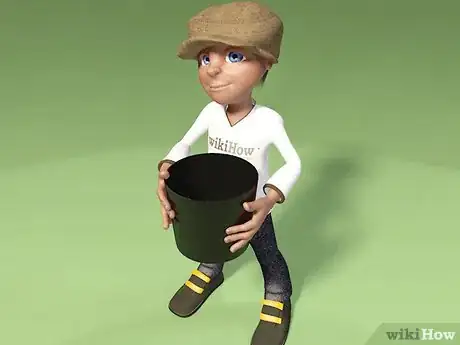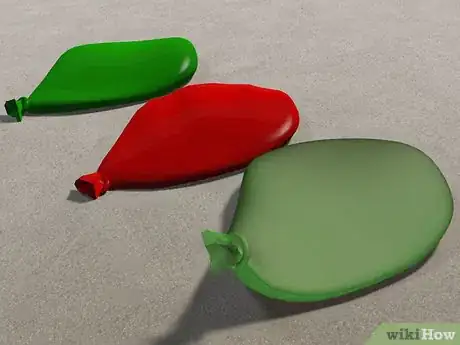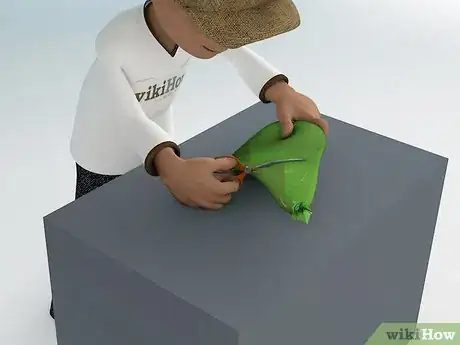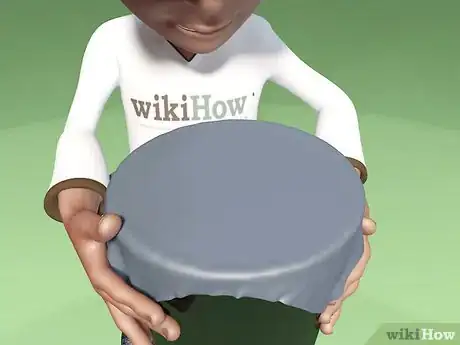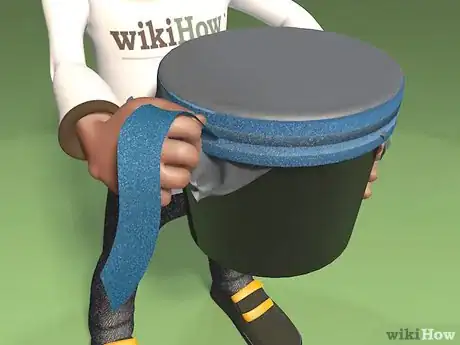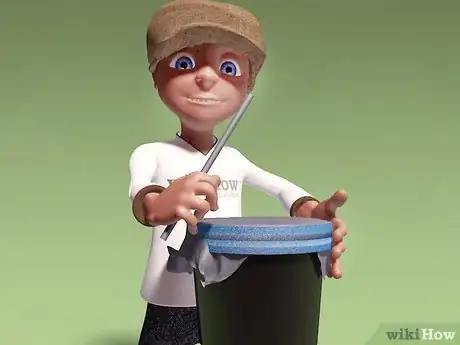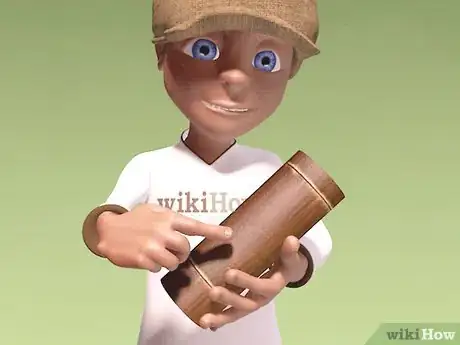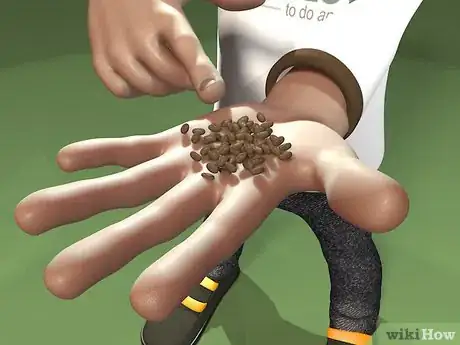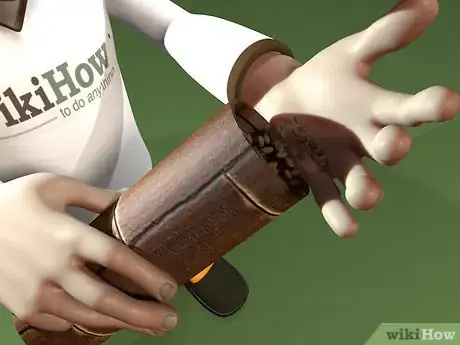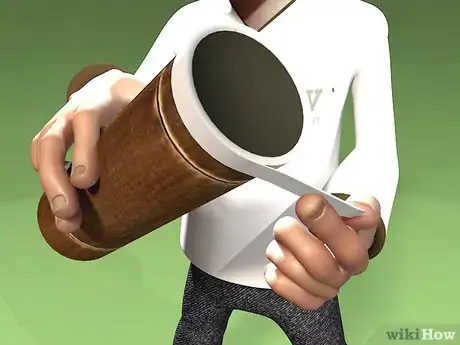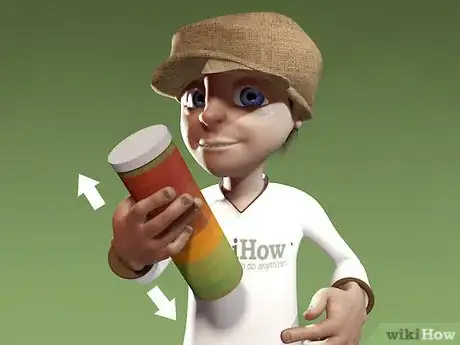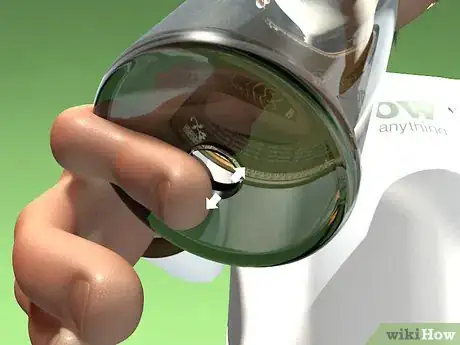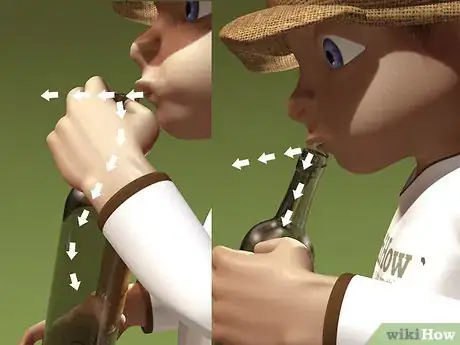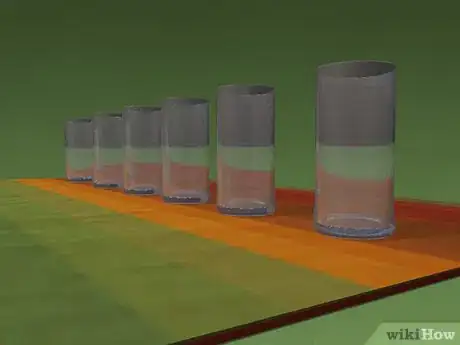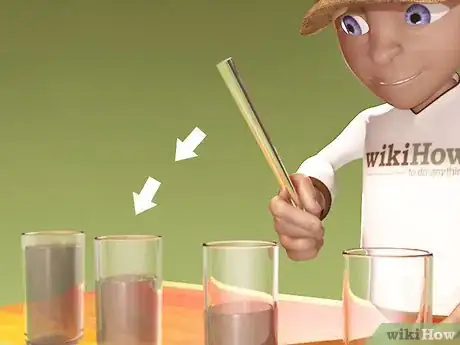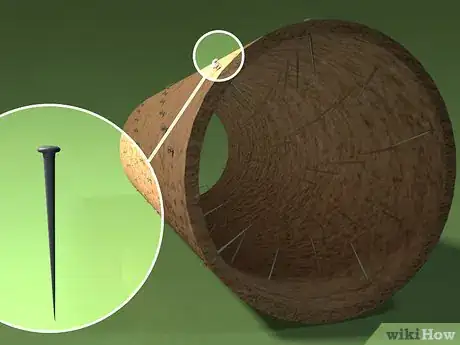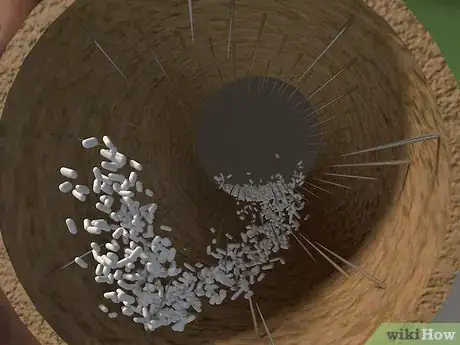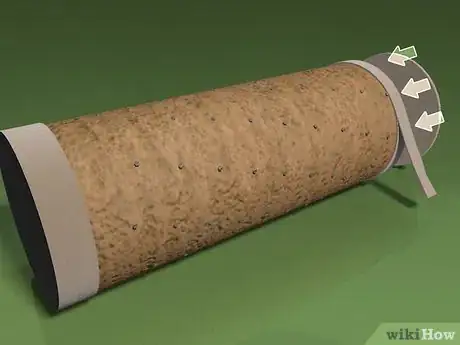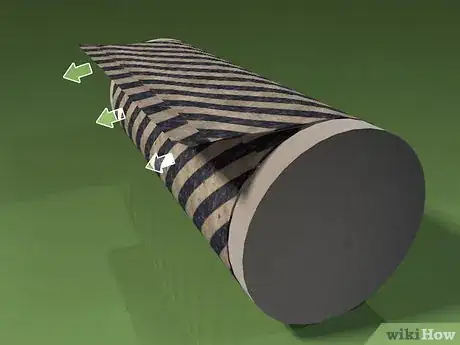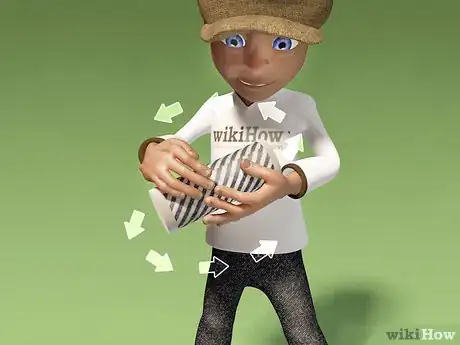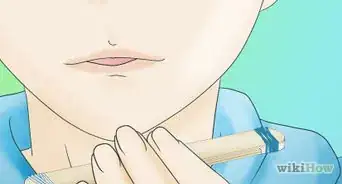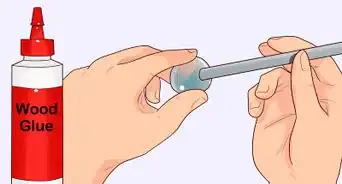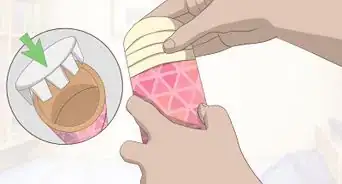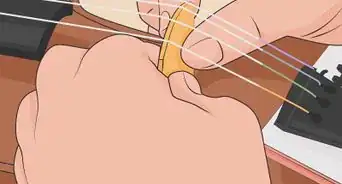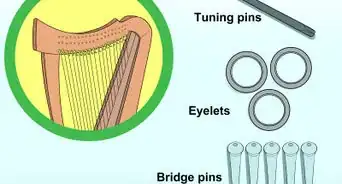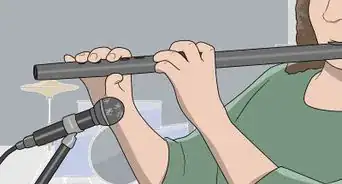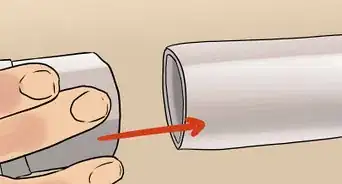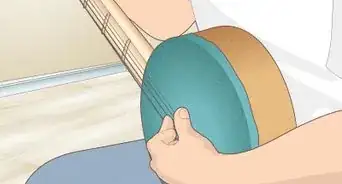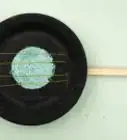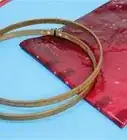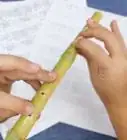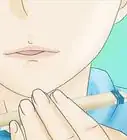X
wikiHow is a “wiki,” similar to Wikipedia, which means that many of our articles are co-written by multiple authors. To create this article, 36 people, some anonymous, worked to edit and improve it over time.
There are 8 references cited in this article, which can be found at the bottom of the page.
This article has been viewed 339,368 times.
Learn more...
You can make beautiful music without buying expensive instruments. For thousands of years people have been making instruments out of natural materials and household items using their own two hands. Read on to learn how to make a simple drum, shaker, flute, xylophone, and rain stick.
Steps
Method 1
Method 1 of 6:
Making a Balloon Drum
-
1Find a drum base. You can use an old pot, a bowl, a vase, or a bucket. Choose a deep, sturdy container as your base. Avoid containers made out of glass or other fragile materials.[1]
-
2Get a package of balloons. You'll likely pop a few in the process of making your drum, so it's good to have more than one. Choose large-sized, sturdy balloons. You may want to get a variety of sizes to you can be sure to find one that fits your chosen drum base.[2]Advertisement
-
3Cut the end off a balloon. Take a scissors and cut of the end of the balloon right where it becomes narrow.[3]
-
4Stretch the balloon over the base. Use one hand to hold the balloon over one end of the base while you use the other hand to stretch it over the other side. The balloon goes over the opening of the pot, vase, or bucket you're using as the base.[4]
- You might want to get a friend to help you hold it it place so it won't snap back.
- If the balloon you used seems too small or to large for the base, try a different sized balloon.
-
5Secure it in place with tape. Use a heavy-duty piece of packing or duct tape to hold the balloon in place all the way around the rim of your drum base.
-
6Play the balloon drum with sticks. Use chopsticks, pencils, or other long, thin objects to play your drum.
Advertisement
Method 2
Method 2 of 6:
Making a Shaker
-
1Choose a shaker container. You can use an aluminum coffee can, a glass jug with a lid, or cardboard cylinders to make shakers. Wooden containers also work well. Each type of container will end up making a different, unique sound.
-
2Pick out something to shake. Any number of small items will make interesting sounds when you shake them. Gather a handful of some or all of the following items:[5]
- Beads, either plastic, glass or wooden
- Dried beans or rice
- Coins
- Seeds
-
3Put the shaking materials in the container.
-
4Seal the container with a lid.
-
5Wrap the container in masking tape. Overlap each loop of tape a bit to make sure the container gets completely covered.[6]
-
6Decorate your shaker. Use paint or and/or other decorating materials to add bright colors and patterns to the shaker.
-
7Shake it up. Use the shaker as a percussion instrument by itself or with a band.
Advertisement
Method 3
Method 3 of 6:
Making a Two-Note Recorder
-
1Get a glass jug or bottle. This works well with a wine bottle, olive oil bottles, large glass jugs, and any other glass container with a skinny neck.[7]
-
2Bore a finger-sized hole in the bottom. Use a glass cutter to cut a small hole in the bottom of the bottle or jug.
-
3Blow across the hole that is already in the top of the jug. Position your lips so that you're blowing horizontally right over the opening. Keep blowing until you get a clear note. This may take a while, so be patient and keep practicing.[8]
-
4Cover and uncover the hole on the bottom with your finger. Do this as you blow, and experiment with the different sounds it produces.
-
5Try tilting your head down and up to make the note sharp or flat.
Advertisement
Method 4
Method 4 of 6:
Making a Water Bottle Xylophone
-
1Get five 20 ounce water bottles. Choose round bottles with flat bases and wide mouths. You can also do this with jars. Number them 1 through 5.[9]
-
2Fill the bottles with different amounts of water. Add the following amounts to the water bottles:
- Bottle 1: 19 oz. This will produce an F note.
- Bottle 2: 13 oz. This will produce a G note.
- Bottle 3: 11 oz. This will produce an A note.
- Bottle 4: 8 oz. This will produce a C note.
- Bottle 5: 6 oz. This will produce a D note.
-
3Play the bottles with a metal spoon. Tap the spoon against the sides of the bottles to produce notes.
Advertisement
Method 5
Method 5 of 6:
Making a Rain Stick
-
1Hammer small nails into a paper towel tube. Hammer them in sideways in random areas around the tube. Hammer in at least 15 or so nails for best effect.[10]
-
2Tape a cover to the bottom of the tube. Tape a piece of cardboard or another sturdy cover over the bottom of the tube.
-
3Add "rain." Pour in some rice, sand, dried beans, beads, popcorn kernels, and other small objects that will make the sound of rain.
-
4Cover the top. Add a second cover to the top of the rain stick, and tape it down.
-
5Cover the rain stick with wrapping paper. You could also decorate it with paint or stickers.
-
6Play the rain stick. Tip it from side to side to hear the sound of falling rain.
Advertisement
Method 6
Method 6 of 6:
Making a Straw Oboe
-
1Get a straw. You can find one at almost any restaurant or you may have some at your house.
- Small straws (such as coffee stirrers or Capri Sun straws) or straws that bend don't work.
-
2Using your teeth, flatten one end of the straw to make a mouthpiece with similar principles as those of a double reed. Experiment with it until it makes a noise.
- If it's easy to blow through and no sound comes out, like a normal straw, try flattening it more. Or you can use your embouchure (lip position) to hold the sides down farther.
- If it's really hard to blow into, it may be too flat. Blow into the other end to open the "reed" a little.
-
3Cut holes into it using a compass and scissors.
- Plan out where you want the hole to be, and how big. Keep in mind you'll be covering it with a finger.
- Poke two holes in the straw using the sharp end of a compass, or something similar. The tiny holes should be at the top and bottom of where you want the hole in the straw.
- When poking the holes, you should make them as large as possible but be careful that the tool doesn't puncture the other side of the straw or air may leak out.
- Using scissors, put the tip of each scissor blade into the small holes made by the compass. If the holes are too small for the blades, re-insert the compass and try rotating it a little to make the holes bigger.
- Make a cut with the scissors to connect the holes.
- Now that you have a bigger place for the scissors to fit, insert one scissor blade into the line you cut and carefully cut out a circle.
-
4Cut as many holes as you'd like.
- Don't make too many; remember, you only have so many fingers to play them with! A recommended number is six.
- If the holes are too high up, they may interfere with the vibrations of the "reed".
-
5Blow into the "reed" similarly to a woodwind such as an oboe.
- Every straw sounds different. It may even sound just like a clarinet!
Advertisement
Community Q&A
-
QuestionHow would you make a guitar?
 Community AnswerYou could get a tissue box and decorate it. Then, cut six rubber bands in half and stretch them across the length of the tissue box.
Community AnswerYou could get a tissue box and decorate it. Then, cut six rubber bands in half and stretch them across the length of the tissue box. -
QuestionWhat can I make out of a water bottle?
 Community AnswerYou can make maracas by putting coffee beans or seeds in the bottles.
Community AnswerYou can make maracas by putting coffee beans or seeds in the bottles. -
QuestionWhat can I use if I don't have a balloon for the drum?
 Community AnswerA latex glove, maybe, or a tarp. Both will make a different noise, however.
Community AnswerA latex glove, maybe, or a tarp. Both will make a different noise, however.
Advertisement
Things You'll Need
Drum
- Container, such as a pot
- Balloon
- Duct tape
- Chopsticks
Shaker
- Container with a lid
- Dried rice, beans, beads, etc.
- Masking tape
- Paint or stickers
Flute
- Water jug or wine bottle
- Glass cutter
Xylophone
- 5 20-oz water bottles with flat bottoms
- Measuring cup
- Water
- Spoon
Rain Stick
- Paper towel roll
- Cardboard
- Scissors
- Tape
- Nails
- Hammer
- Wrapping paper
= Stroboe
- Straw
- Compass or other object with a sharp end
- Scissors
References
- ↑ https://www.youtube.com/watch?v=QRUaPwaiJCQ
- ↑ http://www.babygotbach.org/activities/create/balloon_drumset.html
- ↑ https://www.youtube.com/watch?v=Xv5veWymGs4
- ↑ https://www.appetitetoplay.com/lets-make-balloon-drum
- ↑ https://picklebums.com/music-shakers/
- ↑ https://picklebums.com/music-shakers/
- ↑ https://takelessons.com/blog/homemade-musical-instruments-z15
- ↑ https://takelessons.com/blog/homemade-musical-instruments-z15
- ↑ http://www.philtulga.com/water.html
About This Article
Advertisement
